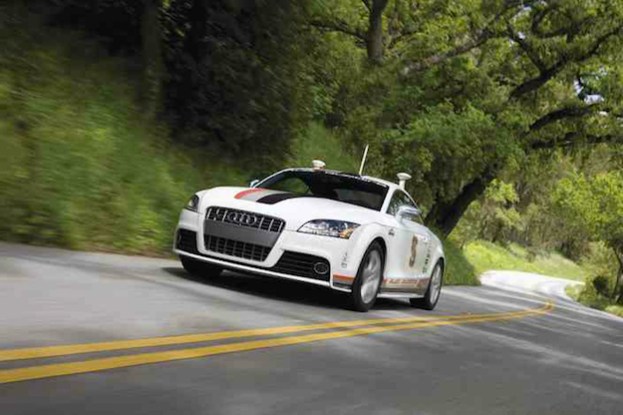
Audi announced this morning that it has received the second-ever autonomous vehicle permit from the state of Nevada, the first of which having been granted to Google in 2012.
In the brave new motoring world, as envisioned by Audi, drivers will regularly turn the controls over to their car in stop-and-go traffic as well as during parking.
Audi boasts it is at the forefront of vehicle autonomy and believes drivers in the near future will be able to “enjoy the convenience,” as the Audi press release put it, of allowing their vehicle to pilot itself.
In 2010, Audi’s autonomous vehicle, the “Autonomous Audi TTS Pikes Peak,” successfully navigated its way through the 156-turn, 12.42-mile Pikes Peak circuit in just 27 minutes. Pikes Peak is a treacherous drive for manned vehicles, let alone one piloting itself. The TTS Pikes Peak’s achievement, then, is no small feat.
The years-long project toward vehicle autonomy has been a joint venture between Audi’s Electronics Research Lab in Silicon Valley and Stanford University.
Audi expects cars of the future to be much like jetliners, which have both an autopilot but also controls for manual human input. In the press release Audi even lays out the concept of vehicles capable of parking themselves in tight parking spots without even having the driver in the vehicle. It makes one wonder, though, if the vehicle can drive itself, why can’t it simply circle the block for several hours while the driver pops into the shops?
Editors' Recommendations
- Hitching a ride in Audi’s AI:Me, the autonomous city car of the future
- Audi balances carsharing, EVs, and sports cars as it prepares for the 2020s
- Audi TT will get the ax to make way for electric cars — and the R8 may be next


